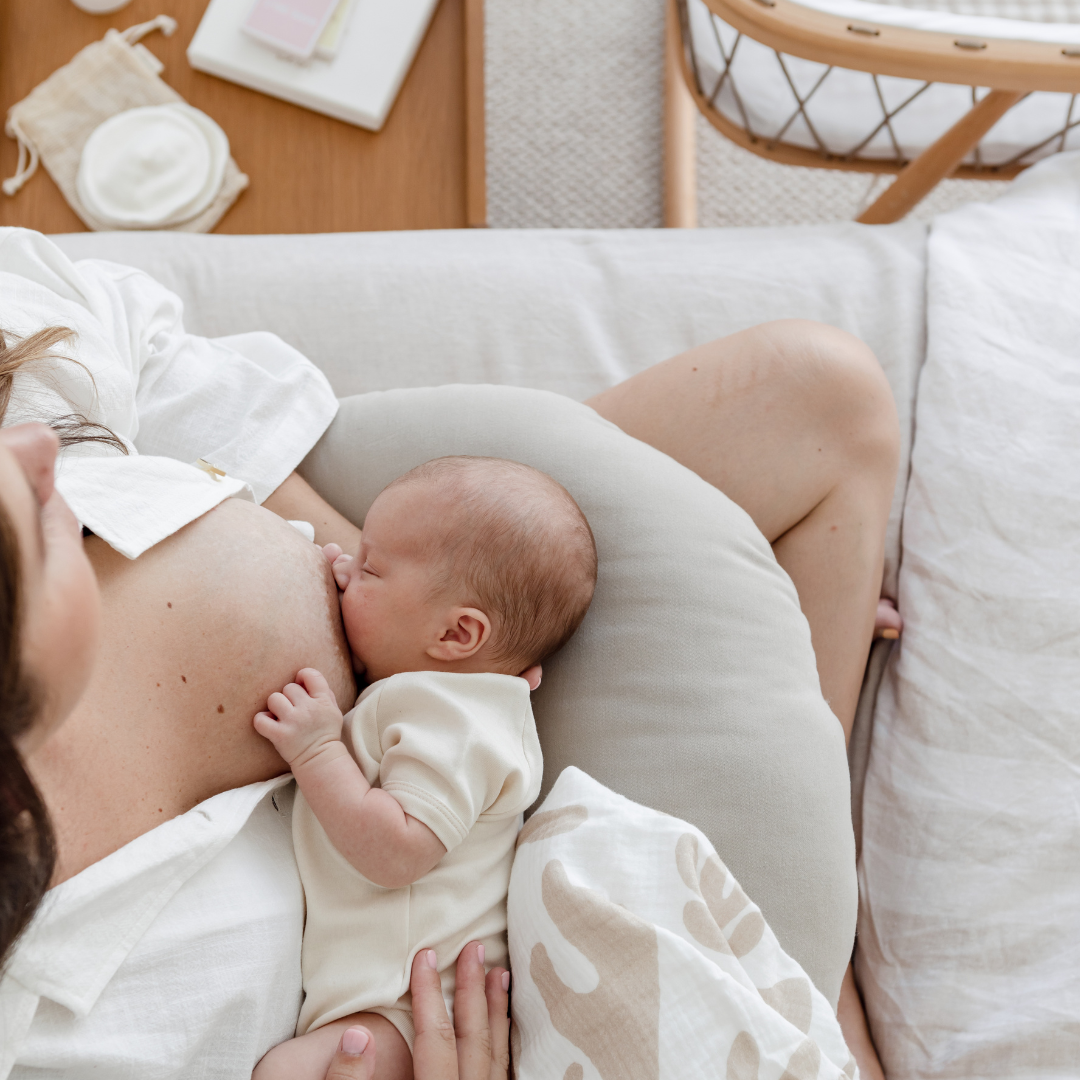Hey mama, welcome to the world of baby feeding. As you and your little one get ready to meet one another after birth (if you haven’t already), you might be wondering what your next steps are going to be.
Feeding your baby isn’t just practical; it can also be a wonderful bonding experience for the two of you. But that doesn’t mean that it can’t also be incredibly difficult and challenging at times, whether it’s navigating common breastfeeding problems or simply the mentality of finding yourself attached to your baby (or a pump) for so many hours of the day.
The main thing to remember is that every feeding journey is going to look a little different, and there is no right or wrong way to feed your baby. So, with a focus on breastfeeding for the time being, here is a little bit about what you can expect when starting breastfeeding, and what support may be available to you.
What options do I have for feeding my baby?
At the end of the day, fed is always best, and what works for you and your family is going to be different from what your other friends and family may have done.
You can choose to breastfeed, express breastmilk and then bottle feed, or use formula. Or, if you want to feed your baby breastmilk but feeding and expressing doesn’t work for you, you can also look into using donor milk.
Much like birth, having a feeding ‘preference’ rather than a set ‘plan’ may help with your feeding journey. The breastfeeding journey is not easy, but with the right information and support, you can find a journey that works for you and your baby.

When does milk come in during pregnancy?
Your body will usually start producing milk sometime between weeks 16 and 22. This first ‘milk’ is actually colostrum, which is thick, yellow, and packed full of nutrients to help prepare your baby’s tiny stomach for actual breast milk.
While you can express colostrum before birth, most medical professionals will recommend waiting until you’re at least 36 weeks pregnant before you do so. Chat with your pregnancy care team beforehand and stop if you have any feelings of contractions.

What to expect when starting breastfeeding – the first 10 days
For most new mums, established breastmilk will come in within three days after giving birth. You’ll notice the colostrum starting to change in colour from yellow to cream, as well as becoming thinner. Heavy or swelling breasts can be another sign your milk is coming in during those early days.
For the first fortnight, the amount your baby needs to eat is going to increase, before becoming steadier around the 10-day mark. You can expect to be feeding your newborn every 2 to 3 hours throughout the day and night for those first few weeks as their stomach grows.
Especially for first-time parents, knowing whether baby is having enough can be a cause of anxiety. Other than making sure you meet all your weigh-in appointment, the best way to keep track of this is to keep track of how many wet nappies your newborn has in a 24 hour period.

Day 10 and beyond - how much time does a mother spend breastfeeding?
The time you spend nursing will change with the age of your baby, with most newborns taking up to 40 minutes to feed and feeding every 2-3 hours over a 24-hour period. So if it feels like feeding is a full-time job… that’s because it is!
But as your baby grows, gets stronger at sucking, and becomes more skilled at breastfeeding, they may take only 5 to 10 minutes on each side and feed more infrequently.
The amount your newborn needs will steady around day 10 and stay the same until around week 6, when their needs increase again. But the good news is that your breasts will know how much your baby needs, and what they need in it. The more you feed, the more milk you produce. This might mean some sore and swollen breasts during those first few weeks, but should calm down as breastfeeding becomes more established.

What are common problems of breastfeeding?
Breastfeeding definitely has its ups and downs, because while it can be a rich and rewarding bonding experience between you and your baby, it can also be extremely challenging.
It’s easy to forget that it’s not just you learning how to breastfeed, it’s also your newborn. Learning how to latch can be the first challenge you encounter, which can lead to frustration (on both ends) as well as tender or even cracked nipples as you both get the hang of things.
There are also potential supply issues, which can range from an undersupply and always feeling like your baby is still hungry, to an oversupply and constantly struggling with full and tender breasts. And with swollen breasts can also come clogged milk ducts, or worse, mastitis.
This might not sound very appealing, but remember that there is a world of support for breastfeeding mothers. You can chat with a lactation consultant who will help you and baby learn a proper technique together, or even check in with a council-run feeding clinic for extra support or another weigh-in between nurse checks.
Whatever support you need, make sure to reach out when you think you need it.

Top breastfeeding accessories
Like everything, certain breastfeeding products may make your feeding journey a little bit easier. Here are some of our favourites for exclusive breastfeeding, caring for your breasts during feeding, or expressing and feeding. We’re also excited to introduce our new range of Mammae products for your breastfeeding journey.

A therapeutic herbal balm that helps provide comfort, care, and protection for sore, dry, or cracked nipples.
Gentle breast massage oil filled with lactogenic and anti-inflammatory herbs, to help alleviate breast tenderness and support a healthy milk flow.
One of our go-to breastfeeding essentials, these comfortable and organic bamboo and cotton breast pads are reusable, to help prevent leaks during those early days of unpredictable milk supply.
An organic blend with fennel, fenugreek, goats rue, and milk thistle, to help promote those moments of calm to yourself while also supporting healthy lactation.
Elegant affirmation cards to help ground you throughout your breastfeeding journey and ritual.
A feminine scent to mark the beginning and end of each breastfeeding ritual.

Designed to help carry the weight of baby and help save your back and posture during those many feeding sessions, day and night.
These reusable breastmilk bags are perfect for storing your breastmilk in your fridge or freezer, take on the go, and warm before use.
An evidence-based approach for how to care for your postpartum body and make sure you’re looking after yourself as a mother.

Whatever your feeding journey looks like, don’t forget to take care of yourself too. Choose the path that looks right for you and your family, and remember that support is always there if you need it. Because at the end of the day, if baby is fed, you’re doing a good job mama.



